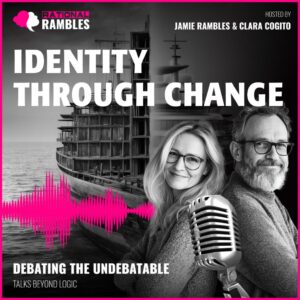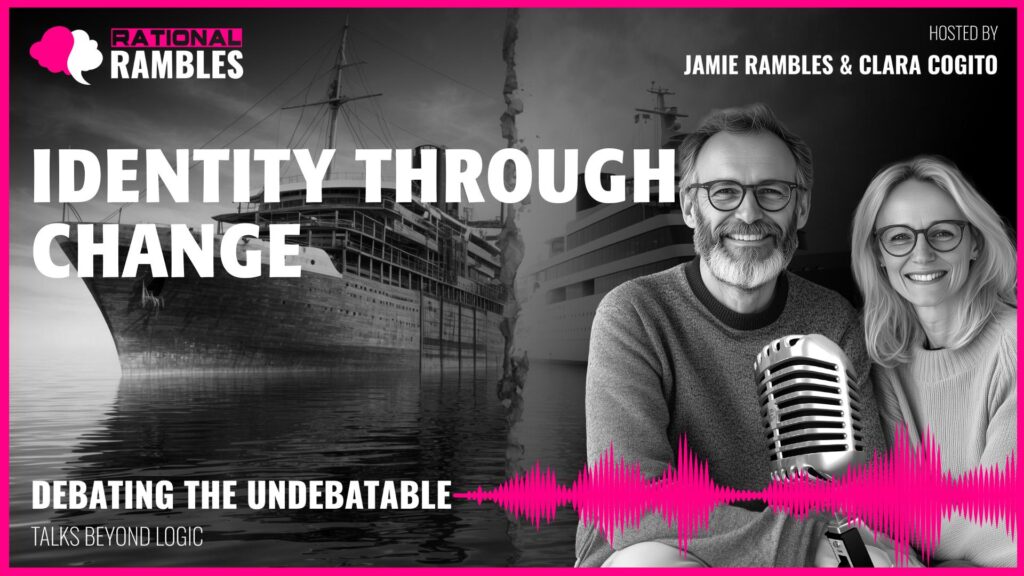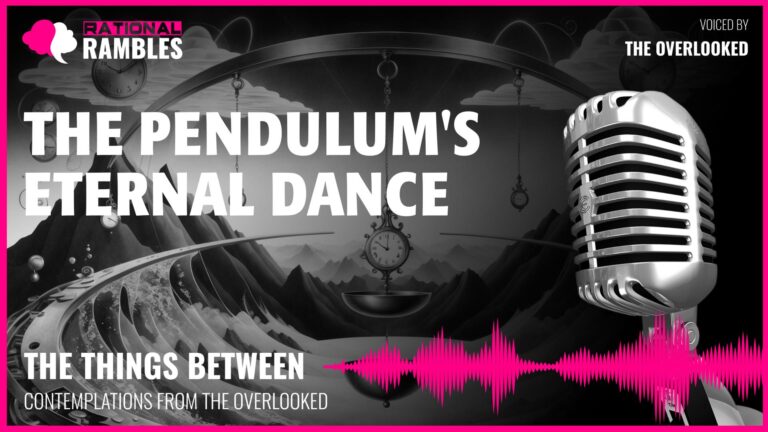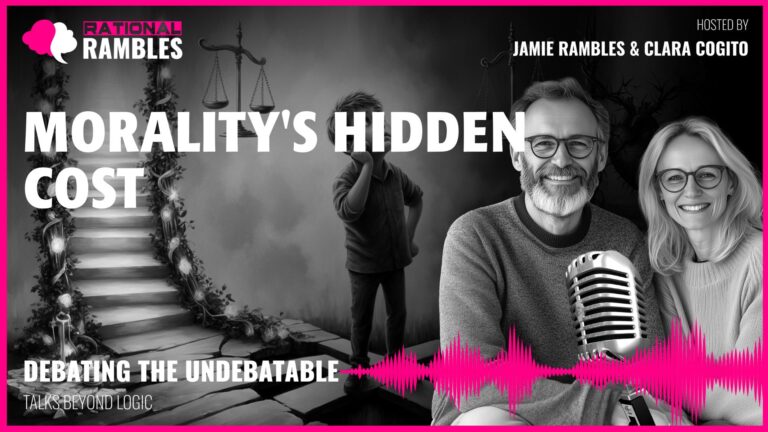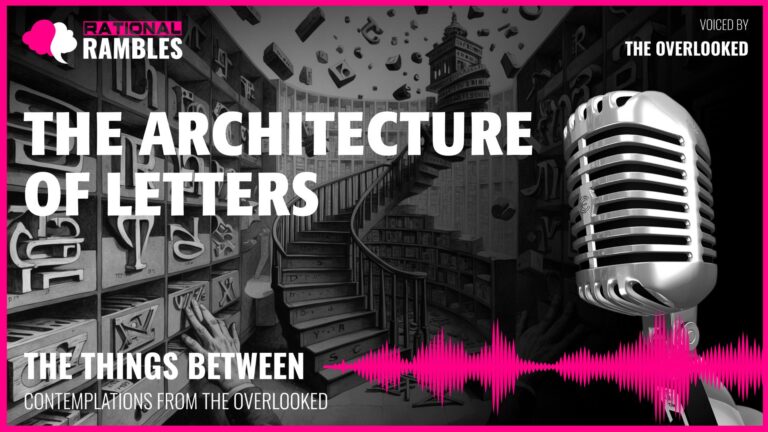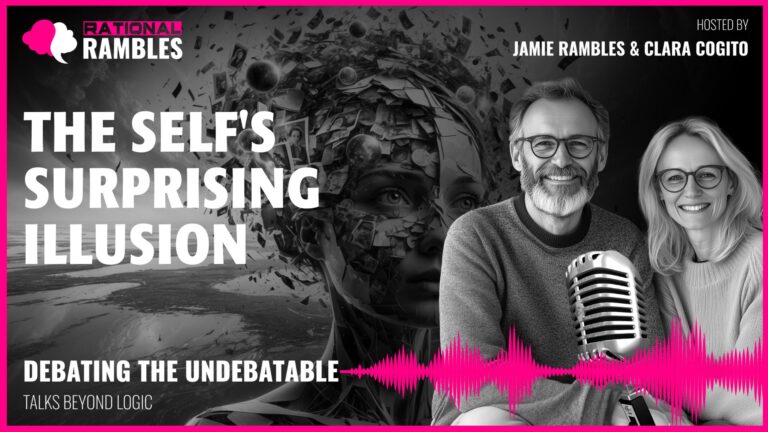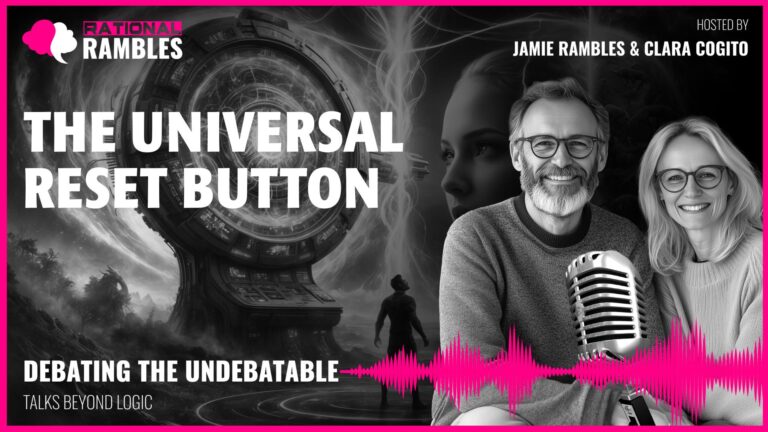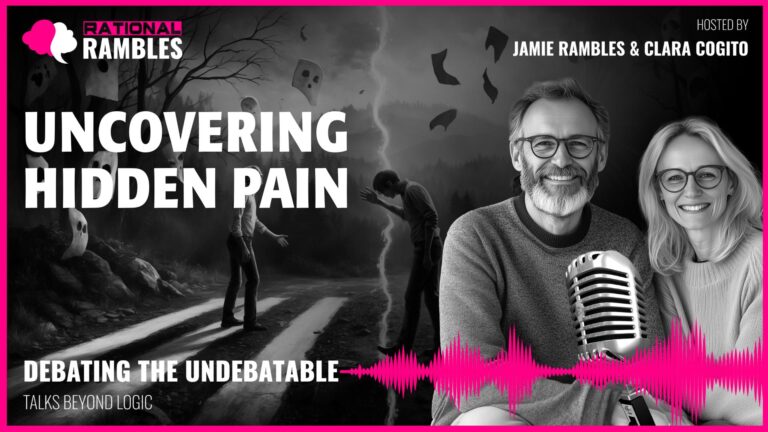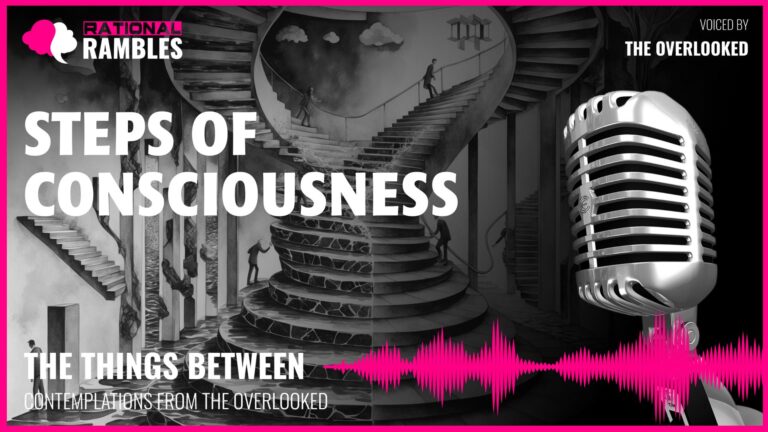Identity Through Change: Exploring the Ship of Theseus Paradox
Introduction: The Persistent Paradox
The ancient philosophical puzzle known as the Ship of Theseus presents a deceptively simple question with profound implications for how we understand identity, persistence through time, and the nature of change. Dating back to the writings of Plutarch, this thought experiment asks: if a ship has all of its constituent parts gradually replaced over time until none of the original remains, is it still the same ship? This paradox forces us to confront our deepest intuitions about what constitutes the identity of objects—and ultimately, ourselves—as they transform over time.
While seemingly abstract, the Ship of Theseus paradox touches something fundamental about human experience. We intuitively understand objects, people, and institutions as maintaining continuous identities despite ongoing change. Our bodies replace most of their cells over time; our personalities and memories evolve; nations change their governments, borders, and populations; yet we continue to speak of these as the “same” entities persisting through time. The paradox reveals tensions in our conceptual frameworks that extend far beyond ancient wooden vessels.
This article explores the philosophical depths of the Ship of Theseus paradox, examining traditional philosophical approaches, psychological perspectives on identity cognition, cultural variations in identity concepts, applications to personal identity, technological implications, and how this ancient puzzle continues to illuminate contemporary questions across multiple domains. Through this exploration, we will see that the enduring value of the paradox lies not in any definitive solution, but in how it reveals the complex, multifaceted nature of identity itself.
The Classical Paradox: Historical Context and Formulation
The Ship of Theseus paradox first appears in the writings of the Greek historian Plutarch, though similar puzzles exist across many philosophical traditions. In “Life of Theseus,” Plutarch describes how the Athenians preserved the ship of their legendary hero Theseus for centuries by gradually replacing decayed planks, creating a philosophical question about whether the fully-restored vessel remained the “same” ship. While the specific example involves a ship, the underlying conceptual problem transcends this particular case.
What makes this paradox so compelling is how it systematically dismantles our intuitions about identity persistence. If we replace a single plank on the ship, it seems absurd to suggest we now have an entirely different vessel. By that same reasoning, replacing a second plank shouldn’t transform the ship’s identity either. We can continue this logic for each individual replacement, yet we eventually reach a point where none of the original material remains. If we accepted that replacing each individual part maintained the ship’s identity, we must seemingly accept that the completely rebuilt ship remains identical to the original—a conclusion that strikes many as counterintuitive.
The Restored Ship Variation
An important variation of the paradox further complicates the picture: imagine that someone collects all the original planks removed from the Ship of Theseus and reassembles them into a second ship. Now we have two vessels with competing claims to being the “authentic” Ship of Theseus—one maintaining continuity of form and function through gradual replacement, the other possessing the original material but reassembled anew. This “restored ship” problem heightens the conceptual tension by forcing us to prioritize different aspects of identity that typically coincide in ordinary scenarios.
The paradox has appeared in various forms across different philosophical traditions. In Buddhist philosophy, the monk Nagasena used a similar example involving a chariot to illustrate the doctrine of anatta or “no-self,” suggesting that just as a chariot is merely a conventional designation for a collection of parts, the “self” is merely a label for a collection of physical and mental processes with no underlying essence. This demonstrates how the basic structure of the paradox can serve different philosophical purposes within various traditions.
Philosophical Approaches to Resolving the Paradox
Philosophers have proposed numerous approaches to the Ship of Theseus paradox, each emphasizing different aspects of identity and persistence. These approaches reveal not just potential solutions to the specific puzzle, but distinct ways of conceptualizing identity more broadly.
Spatio-temporal Continuity
One influential approach focuses on spatio-temporal continuity as the foundation of identity. On this view, what makes the gradually-replaced Ship of Theseus “the same ship” is the continuous causal chain connecting each stage to the previous one. The ship maintains its identity because the transformation happens gradually, with each iteration being causally connected to its predecessor in the right way. This perspective prioritizes the continuity of the ship’s history over its material composition.
Philosophers like David Hume and, more recently, Sydney Shoemaker have developed sophisticated accounts of identity based on various forms of continuity. These approaches often appeal to our intuitions about ordinary objects, which we typically track through space and time rather than through their material constituents. When we speak of “the same river” despite the water constantly changing, we’re implicitly prioritizing spatio-temporal continuity over material identity.
Form and Function
Another approach, with roots in Aristotelian philosophy, emphasizes the form or function of an object as the basis of its identity. On this view, what makes something “a ship” is not its particular material components but its structure, purpose, and capability for maritime transportation. As long as these formal and functional properties remain intact, the object maintains its identity as “the same ship” regardless of material changes.
This perspective aligns with how we commonly think about artifacts. We consider a repaired watch to be “the same watch” not because it maintains all the same parts, but because it maintains the same form and function. This approach provides a straightforward resolution to the basic Ship of Theseus paradox but struggles more with the “restored ship” variation, where both vessels could potentially maintain the same form and function.
Mereological Essentialism
A more radical approach is mereological essentialism, which maintains that an object’s identity is inextricably tied to its constituent parts. On this strict view, replacing even a single plank means we no longer have the same ship, but a new ship that is very similar to the original. While this view avoids the paradoxical conclusion of the completely replaced ship being “the same,” it contradicts our ordinary ways of speaking about objects persisting through minor changes.
Philosopher Roderick Chisholm defended versions of this view, arguing that our ordinary language about object persistence involves convenient fictions rather than metaphysical truths. On this account, the Ship of Theseus paradox reveals the limitations of our everyday concept of identity rather than a genuine metaphysical puzzle.
Identity as a Matter of Degree
Philosophers like Robert Nozick have suggested that identity might be better understood as a matter of degree rather than an all-or-nothing property. On this view, as more planks are replaced, the renovated ship becomes “less identical” to the original, though it maintains significant continuity. This approach rejects the binary framing of the original paradox in favor of a more nuanced concept of “degrees of sameness.”
This perspective aligns with how we often speak about extensively modified objects in ordinary language—we might say a heavily restored classic car is “mostly original” or that a renovated building “maintains much of its original character,” implicitly recognizing that identity can be partial rather than absolute.
Psychological Perspectives: How We Conceptualize Identity
The Ship of Theseus paradox doesn’t just reveal philosophical puzzles about the nature of objects; it also illuminates psychological questions about how human minds conceptualize identity and track objects through change. Cognitive science and psychological research offer important insights into why we think about identity the way we do.
The Adaptive Value of Identity Tracking
From an evolutionary perspective, our ability to recognize something as “the same” despite surface changes serves crucial adaptive functions. Early humans needed to track physical objects, other people, potential threats, and food sources across time and changing conditions. The ability to maintain the concept of an entity as persistent despite superficial transformations would provide tremendous survival value. If we couldn’t recognize a predator under slightly different lighting conditions, or if we treated people as completely different entities each time they changed clothes, social life would be practically impossible.
This evolutionary lens suggests that our concepts of identity aren’t arbitrary philosophical constructions but deeply pragmatic cognitive tools shaped by natural selection. Rather than tracking metaphysical “sameness,” our identity concepts may primarily serve practical functions of prediction and navigation in a complex environment.
Category-Dependent Identity Conditions
Psychological research suggests that we apply different criteria for identity persistence depending on the category of object in question. When thinking about artifacts like ships, tools, or furniture, we tend to emphasize function and form. For natural kinds like animals or plants, we often prioritize biological continuity. For persons, psychological continuity takes precedence. These distinctions map onto philosophical approaches but emerge naturally from our cognitive architecture rather than explicit reasoning.
Studies in developmental psychology show that these category-dependent identity intuitions emerge early in cognitive development. Young children already demonstrate sophisticated, domain-specific understandings of how different types of entities maintain their identities through various kinds of changes. This suggests that our identity concepts are fundamental to how we organize our understanding of the world.
Psychological Essentialism
Another relevant psychological phenomenon is what cognitive scientists call “psychological essentialism”—our tendency to believe that categories have underlying, often invisible “essences” that define what they truly are. When identifying natural kinds like animals, people intuitively prioritize internal, invisible properties over surface appearances. This essentialist thinking influences our judgments about identity persistence, particularly for natural kinds and entities with special significance.
The essentialist bias might explain why we treat some artifacts differently than others. Objects with historical or emotional significance—like the ship of a legendary hero—might be conceptualized more like natural kinds, with stricter requirements for maintaining “authentic” identity. This suggests that our identity judgments are influenced not just by objective features but by the psychological and social significance we attribute to objects.
Fuzzy Categories and Prototype Theory
Modern cognitive science has largely abandoned the classical view of categories as defined by necessary and sufficient conditions in favor of prototype theory, which sees categories as organized around central examples with fuzzy boundaries. This understanding of categorization aligns with approaches to the Ship of Theseus that treat identity as a matter of degree rather than a binary property.
From this perspective, the paradox arises partly from attempting to apply classical, binary logic to concepts that actually function with graded membership and fuzzy boundaries in human cognition. The renovated ship might be seen as having “high but not perfect” identity with the original rather than forcing an all-or-nothing judgment.
Cultural Dimensions: Identity Across Traditions
The Ship of Theseus paradox takes different forms across cultural contexts, reflecting diverse metaphysical assumptions and values regarding identity, permanence, and change. These cultural variations reveal that identity concepts aren’t universal but shaped by broader philosophical and religious traditions.
Eastern Philosophical Perspectives
In many East Asian philosophical traditions influenced by Buddhism, the paradoxical nature of the Ship of Theseus might not appear so troubling. The Buddhist doctrine of impermanence (anicca) emphasizes that all phenomena are in constant flux, with no permanent essence. The paradox might be seen not as a problem to be solved but as an illustration of the conventional rather than ultimate nature of identity concepts.
The Japanese Shinto shrine at Ise exemplifies a cultural practice that embodies a distinctive approach to identity persistence. The shrine is completely rebuilt every 20 years using traditional techniques but is considered to be over 1300 years old. This practice reflects a conception of identity focused on ritual process, transmission of knowledge, and continuity of intention rather than material persistence. The physical structure is understood as an instantiation of an enduring spiritual reality rather than as the locus of identity itself.
Institutional and Social Dimensions of Identity
Beyond individual philosophical traditions, identity often depends on social recognition and institutional frameworks. Whether something remains “the same” often relies not just on physical or psychological continuity but on how it’s recognized by relevant social groups and institutions. A nation can change its government, borders, and population yet remain “the same” country because it’s recognized as such by other nations and international bodies.
This social dimension suggests that identity isn’t merely a metaphysical puzzle but a social practice. A sports team remains “the same” team despite complete turnover in players and staff because fans and institutions maintain that identity narrative. In many contexts, identity isn’t something we discover about the world but something we collectively construct and maintain through shared recognition and practices.
Cultural Variations in Material Authenticity
Different cultures and communities place varying emphasis on material continuity versus other forms of continuity. In some traditions, particularly those associated with religious relics, material continuity might be paramount—the physical connection to the original is essential to the object’s significance. In others, symbolic or functional continuity might matter more.
These variations aren’t just differences of opinion but reflect different social practices of identity-construction that serve distinct cultural purposes. A Western museum might emphasize material authenticity in preserving artifacts, while other traditions might prioritize maintaining techniques, uses, or appearances over preserving original materials.
Personal Identity: The Ship of Theseus and the Self
Perhaps the most profound application of the Ship of Theseus paradox concerns personal identity. If we accept that identity can persist through material change, as with the ship, what implications does this have for our understanding of ourselves as persistent entities through time?
The Physical Dimension: Bodies in Flux
Human bodies undergo constant material turnover at the cellular level. Within approximately seven years, nearly every atom in our bodies has been replaced, yet we intuitively feel continuous. This physical renewal happens gradually and maintains structural continuity, much like the ship’s plank-by-plank replacement.
This biological reality raises questions about the relationship between bodily continuity and personal identity. If “we” are not identical with the specific matter that constitutes us at any given moment, what exactly persists through this physical transformation? The paradox helps us see that our intuitive sense of being the “same person” through time cannot be reduced to material continuity alone.
Psychological Continuity Theories
Many philosophers, including John Locke and contemporary thinkers like Derek Parfit, have argued that personal identity depends primarily on psychological continuity rather than physical continuity. On this view, what makes you “the same person” over time is the connection between your psychological states—memories, beliefs, desires, character traits—across different time periods.
Parfit notably argued that identity itself might not be what fundamentally matters. What matters, he suggested, is psychological continuity and connectedness—the relationships between psychological states across time. This shifts the focus from binary identity to degrees of continuity, much like the graduated approach to the Ship of Theseus paradox.
The Self as Process Rather Than Entity
Contemporary neuroscience and psychology increasingly view the self not as a fixed entity but as a dynamic process—a narrative that the brain constructs to create coherence out of countless neural events. Studies of patients with certain brain injuries or conditions like dissociative identity disorder suggest that our sense of having a single, continuous self can be disrupted or multiplied.
This process-oriented view of selfhood aligns with Buddhist insights that the self lacks an intrinsic essence. Just as the Ship of Theseus might be understood as a convenient designation for a collection of parts functioning together, the “self” might be a useful but ultimately conventional label for a collection of physical and mental processes that maintain certain patterns over time.
Thought Experiments: Teleportation and Mind Uploading
The Ship of Theseus framework becomes particularly revealing when applied to futuristic scenarios involving personal identity. Consider teleportation, where your body is disassembled in one location and perfectly reconstructed elsewhere. Would the teleported person be “you,” or merely a perfect copy? Similarly, would uploading your consciousness to a computer create a digital entity that is genuinely “you,” or just a simulation?
These thought experiments separate aspects of identity that usually coincide—informational continuity is maintained while physical continuity is broken. The divergent intuitions people have about these scenarios suggest that our concept of personal identity isn’t unified but comprises multiple criteria that can come into conflict when technology separates continuities that naturally occur together.
Technological and Practical Applications
Beyond abstract philosophical concerns, the Ship of Theseus paradox has practical implications across numerous domains where questions of identity and authenticity arise.
Art Restoration and Cultural Heritage
In art conservation and restoration, practitioners constantly navigate questions reminiscent of the Ship of Theseus. If the Mona Lisa were restored so thoroughly that none of the original paint remained, would it still be the “real” Mona Lisa? Different conservation philosophies reflect different approaches to this paradox—some prioritize preserving original materials at all costs, while others emphasize maintaining the artist’s intended appearance or effect, even if that requires replacing original materials.
Similar questions arise in architectural preservation. Historic buildings often have most or all of their original materials replaced over centuries of maintenance, yet are still considered “the same” historic structures. The decisions made by conservators and preservationists implicitly reflect positions on the Ship of Theseus paradox, whether recognized as such or not.
Digital Objects and Perfect Duplication
The paradox takes new forms in the digital realm, where perfect duplication is possible. If I have a digital photo and make a perfect copy, which is the “original”? Unlike physical objects, digital artifacts can be duplicated without any degradation or difference between copy and original, challenging our traditional notions of authenticity based on material continuity.
Blockchain technology and non-fungible tokens (NFTs) represent attempts to reintroduce scarcity and unique identity to digital objects, essentially creating technological solutions to track “the same digital object” across time and transfers—a technological approach to the Ship of Theseus problem in digital space.
Legal and Institutional Identity
Legal systems must often make practical determinations about identity persistence that reflect philosophical positions on the paradox. If a company changes its name, management, ownership, and business model but maintains legal continuity, is it “the same” company for purposes of contracts or liability? If a vehicle has most of its parts replaced after an accident, is it “the same” vehicle for insurance or registration purposes?
These practical questions require definitive answers in legal contexts, even where philosophical uncertainty might remain. The solutions adopted in different legal systems reflect particular approaches to identity persistence, often prioritizing certain types of continuity (legal, functional) over others (material, structural).
The Paradox as Cognitive Illumination
Beyond specific solutions or applications, the Ship of Theseus paradox serves a broader function by revealing the architecture of our conceptual systems and the limitations of our ordinary ways of thinking about identity.
Paradox as Cognitive Illusion
The Ship of Theseus might be understood as a kind of cognitive illusion, similar to optical illusions that persist even when we understand how they work. Just as certain visual illusions exploit fundamental features of our perceptual system, the paradox may exploit a fundamental feature of our conceptual system—our tendency to unify different kinds of continuity into a single concept of “identity.”
The paradox feels irresolvable because it forces apart continuities that our conceptual system automatically binds together in ordinary circumstances. Material continuity, functional continuity, and spatio-temporal continuity typically coincide in our everyday experience of objects. When the paradox artificially separates these factors, our intuitions become confused precisely because there isn’t a single, coherent concept of “sameness” at work.
Wittgensteinian Language Games
Ludwig Wittgenstein’s later philosophy suggested that many philosophical problems arise from conflating different “language games” or contexts of meaning. From this perspective, the Ship of Theseus paradox might emerge when we try to apply a single, rigid concept of identity across contexts where more flexible, contextual understandings would better serve us.
In ordinary language, “same” means different things in different contexts. When we say “I’m wearing the same shirt as yesterday,” we mean one thing; when we say “These twins are wearing the same shirt,” we mean something else. The paradox might reveal not a problem with the world but with our expectation that a single concept of “sameness” should apply universally across all contexts.
Cognitive Metaphysics
Some contemporary philosophers engage in what’s been called “cognitive metaphysics”—the study of how our cognitive architecture shapes our understanding of fundamental reality. From this perspective, the Ship of Theseus paradox reveals how our cognitive architecture shapes our understanding of object persistence and identity.
This approach suggests that many traditional philosophical problems arise at the intersection of how our minds naturally organize experience and the complexities of the world itself. The paradox makes visible cognitive processes that usually operate invisibly, allowing us to become more conscious of how we construct the seemingly solid categories through which we navigate the world.
Conclusion: The Enduring Value of the Paradox
The Ship of Theseus paradox has maintained its philosophical relevance for over two millennia not because it awaits a definitive solution, but because it continues to illuminate new aspects of identity as our understanding evolves. What begins as a puzzle about planks and ships opens into questions about the nature of concepts themselves, the relationship between language and reality, and ultimately, the structure of human cognition.
The paradox reveals identity as simultaneously physical and formal, individual and social, discovered and constructed. It suggests that identity is not a single property but a cluster of different continuities that usually coincide but can come apart in certain contexts. This more nuanced understanding helps us navigate complex questions about authenticity, persistence, and change across domains from art conservation to personal identity.
Perhaps most importantly, the Ship of Theseus reminds us that the most profound philosophical questions aren’t puzzles to be definitively solved but invitations to more thoughtful engagement with the complexity of existence. The enduring value of the paradox lies not in any final answer but in how it continues to prompt us to examine our most fundamental assumptions about what it means for something—or someone—to remain “the same” through the inevitable transformations of time.
References and Further Reading
Arp, R. (2011). “Information and the Ship of Theseus”. Biology and Philosophy, 26(4), 527–552.
Blatti, S., & Snowdon, P. F. (Eds.). (2016). Animalism: New Essays on Persons, Animals, and Identity. Oxford University Press.
Chisholm, R. M. (1976). Person and Object: A Metaphysical Study. Open Court.
Gallois, A. (2016). “Identity Over Time”. In The Stanford Encyclopedia of Philosophy. Stanford University.
Nozick, R. (1981). Philosophical Explanations. Harvard University Press.
Parfit, D. (1984). Reasons and Persons. Oxford University Press.
Shoemaker, S. (1984). Identity, Cause, and Mind. Cambridge University Press.
Strawson, P. F. (1959). Individuals: An Essay in Descriptive Metaphysics. Methuen.


